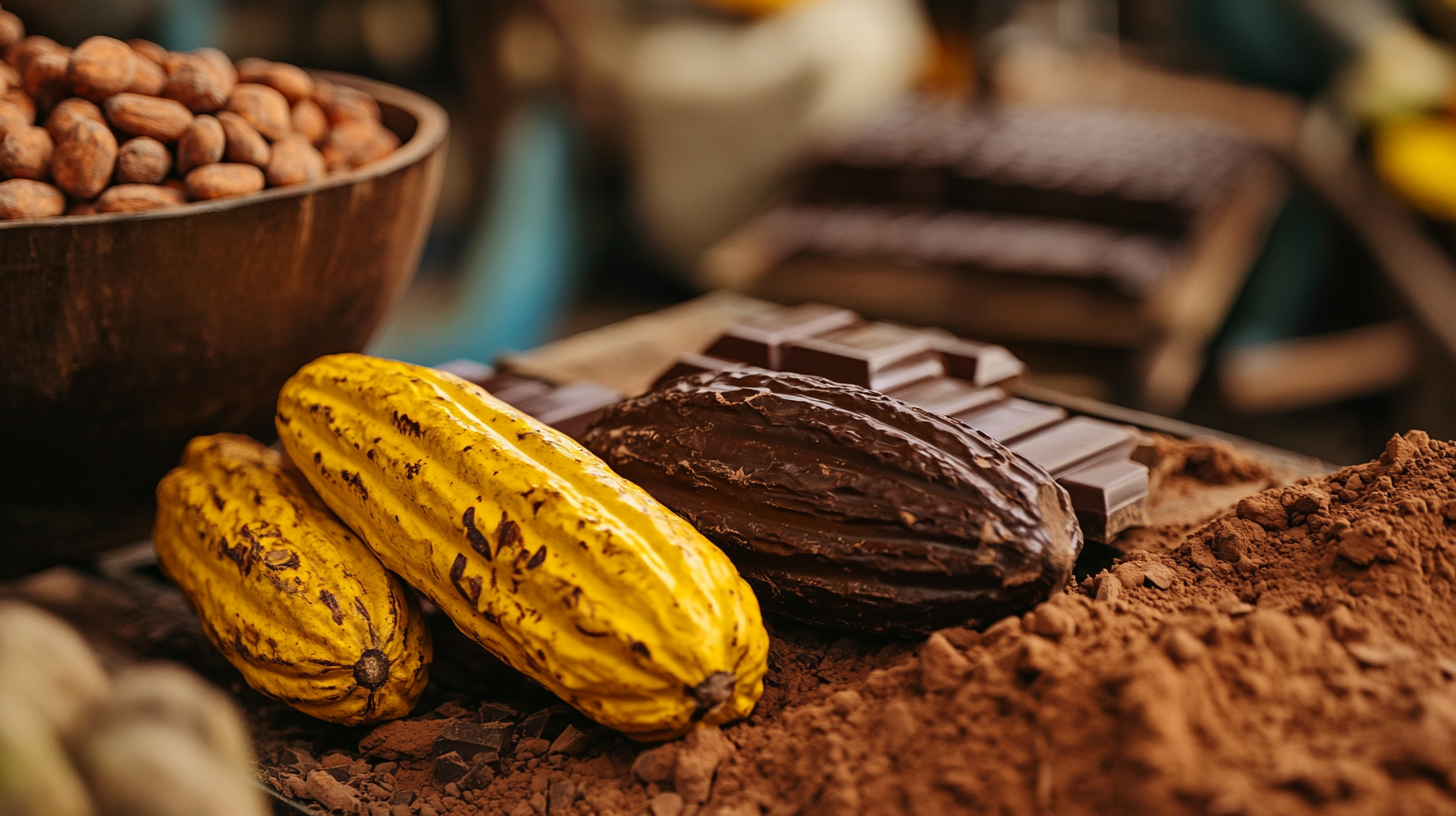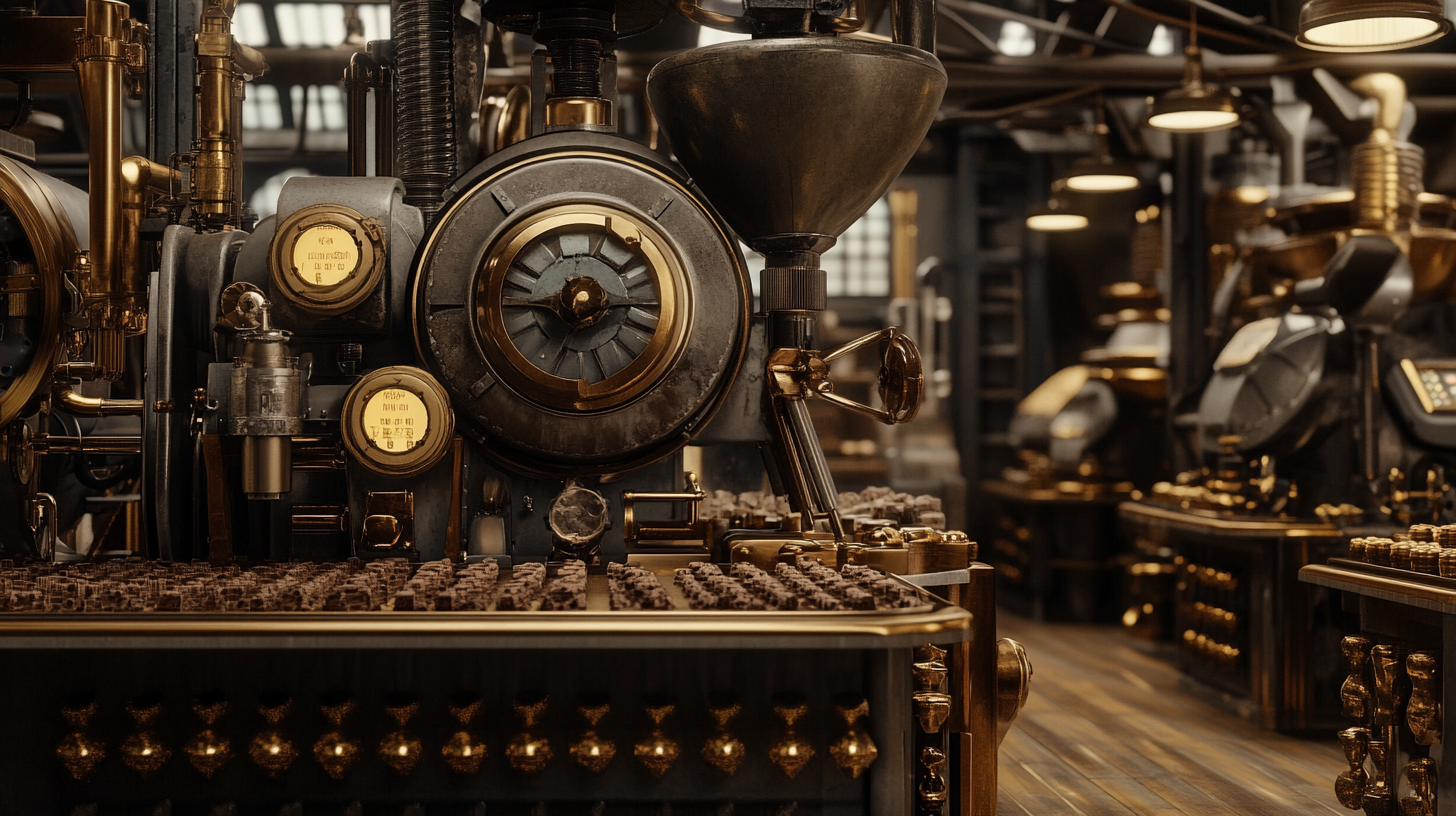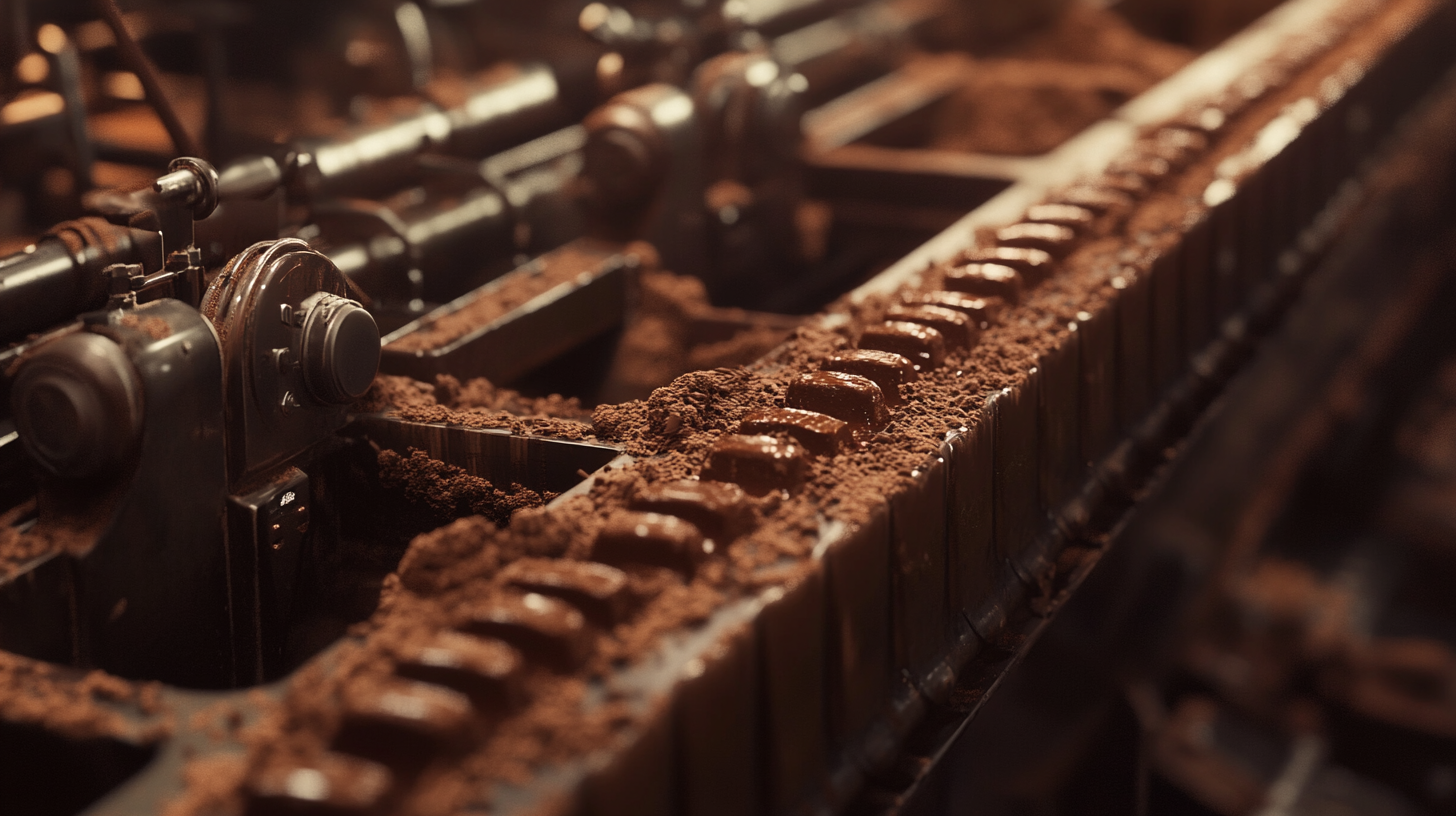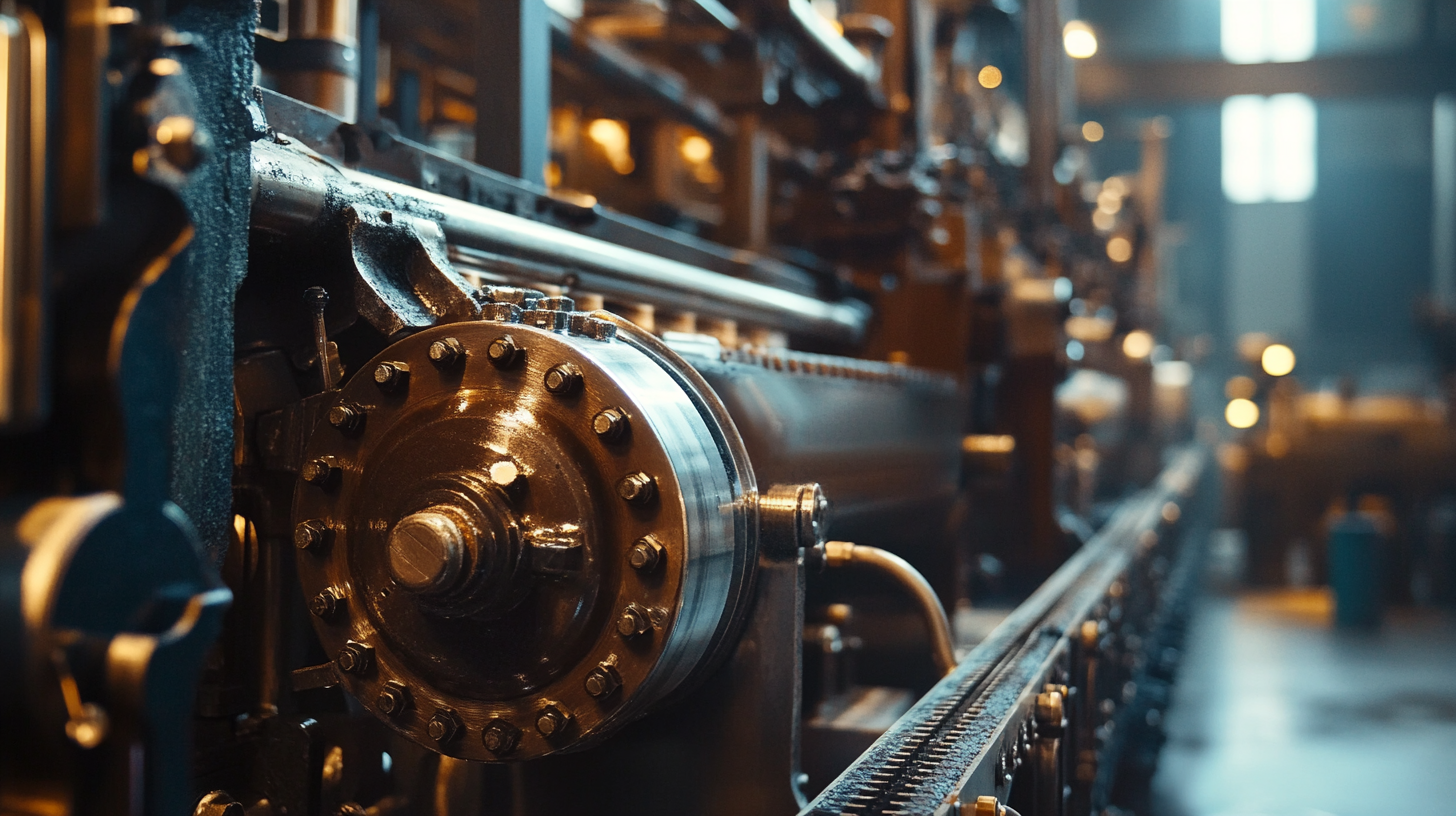The chocolate industry has seen major changes in the past few decades, from artisan production to highly modern mechanized mass production. It has been advanced chocolate machinery that has transformed the efficiency of chocolate making and the quality and range of products available in the market. In an environment where consumers continuously demand better and unique chocolate products, manufacturers have found it imperative to adopt newer technologies that enhance production techniques or give them leverage in the competitive market.
This blog seeks to outline the inception and evolution of chocolate-making machinery, highlighting innovations that have defined this industry. We will, therefore, look at the journey of chocolate machinery from old-fashioned grinders and tempering machines to modern-day automated systems and how innovations afford chocolatiers the ability to better their craft and maximize output. Furthermore, competitiveness will be discussed, alongside changes in the market and the role technology has played in educating businesses on how to thrive in an ever-changing environment. Let us delve into the symbiotic relationship between chocolate making and machinery.

Given that the latest edition of this machine is already for sale in 2023, in what other areas specifically do you see much of a development in such machines? Some of the machines which have seen major developments, especially in chocolate manufacture, have included the ball mill and continuous conching. The journey into automation and robotics is, however, at the initial stages in the factory production lines of chocolate processing. There, modern machinery is said to be manufactured with smart technology allowing for optimal production while meeting the quality levels expected. According to an IBISWorld report, automation technologies in the chocolate production industry grew 19% since 2015. However, as the production process goes forward, there appeared to be entirely odd features in the machinery used. Even earlier in the 20th century came the introduction of continuous conching machines that truly transformed the texture and flavor of chocolate. The development of such machines by Rodolphe Lindt in 1879 made continuous conching possible, allowing for longer times to conch dark and smooth chocolate. Indeed, a report from 2020 shows that around 35% of the total production costs in the chocolate manufacturing sector are created by equipment and machinery, which justifies the investment in up-to-date technology if one wishes to remain competitive.

After their emergence into the market, innovations in the chocolate-making process began rapidly changing the sector-and these changes have continued to be felt recently. A major innovation is the grinding technology that improved cacao bean processing to attain higher efficiencies with better grinding consistency. Grinding, in the past, required intensive human labor coupled with a long time; machines nowadays can complete what formerly would take weeks in a matter of hours with very fine particle sizes. This increases the quality of the final product--and even the flavor attribute that is relevant to the present consumers.
The other notable factor should come in as automation and robotics applied in chocolate manufacture. Actually, the factory automation includes everything from mixing and refining to packaging, providing a high level of streamlining of the whole manufacturing process. Thus, it is reducing the costs of labor while at the same time correcting human errors. So that each batch of chocolate can conform to the stringent standards of quality continuously. Besides, with automation, producers can easily upscale their operations to quickly react to market demands and consumer trends.
Sustainability was also a significant area for the growth of chocolate machinery. New types of environmentally friendly technologies are being developed to limit waste and consumption of energy. Examples include energy-saving roasters and cooling systems that consume less water. Such innovations show the industry's regard for responsible manufacturing. With consumer sustainability becoming a pressing issue, these changes will be indispensable for chocolate manufacturers wishing to keep their competitive edge while following an ethical pathway in sourcing and manufacturing.

The very recent period has seen unprecedented changes in the chocolate production industry mainly due to automation. In this fierce competition among manufacturers, automation machinery has become the hallmark for production efficiencies. On the other hand, automation streamlines and removes the possibility of human error, ensuring high quality and lower costs of production.
Automating mixing and tempering was one of the major advances in the technology of chocolate production. This allows exact control over both the ingredient inputs and the temperatures required for designing the type of chocolate that satisfies the expected texture and flavor. More importantly, automated packing systems speed up what can sometimes be a bottleneck in production. This allows manufacturers to increase output and reduce labor costs, which is crucial in an ever-tightening market.
With data-driven automation technologies like IoT (Internet of Things), real-time monitoring of production lines is now possible. Such a capability can help manufacturers optimize their operations by analyzing their performance metrics and adjusting them on the fly. This level of efficiency not only fast-tracks production time, but also ensures optimal resource management for sustainable operations. As the chocolate industry continues to evolve, automation will be even more important in guaranteeing competitive-edge and future innovation.

The chocolate machinery market globally has undergone a lot of change as a result of technology and consumer behavior changes, and thus companies involved in manufacturing machinery for chocolate production have to innovate and reinvent methods that will help them survive in a very competitive field. One of the ways is through investing in automation and smart technologies, which have been found to improve production efficiency, reduce operational costs, and greatly help any manufacturing company with IoT (Internet of Things) capabilities to monitor operational equipment performance in real-time and allows predictive maintenance for reducing downtime.
Also, in the machinery and equipment world, business sustainability is another important aspect that has caught fire. The more consumers get conscious about ethical sourcing and eco-friendliness, the greater will be the demand for machinery essentially meant for sustainable production. The companies can consider offering machinery that is powered by renewable energy or machines using less water and electricity during the production of chocolate, thereby helping them to stand apart in the competitive market. These sustainability aspects do not only sell in the market but also satisfy a bigger agenda globally, i.e., responsible consumption.
Collaboration and partnership play a dynamic role too for better strategy for competition. Strategic alliances formed with cacao suppliers, technology innovators, and research institutions will help machinery manufacturers to remain ahead of the pack in product development and market trends. Moreover, joint ventures can provide shared resources and knowledge for more efficient machinery solutions that ultimately satisfy different needs of chocolate producers around the world. This is the path that all such companies have to tread to make their own place in the changing scenario of the chocolate machinery market.
The sustainability trends in the chocolate industry are tremendously altering production technologies. These changes speedily keep all manufacturers moving towards all environmentally friendly practices. The forecast is that this market will hit a staggering figure of $125 billion by 2024. This would be an increase associated with apparent grow-up disposable incomes in the developing world. Now, climate change problems and quite strict regulations surrounding the cocoa sources are providing them support to be quickly attracted to alternative ingredients for a wide range of purposes related to chocolate.
Reports further predicted that the chocolate market would record an annual growth rate of about 3.3% between the years 2025 to 2034. Along with a shift towards innovative and sustainable methods of production and packaging, it is expected that the sustainable food packaging market would grow substantially, at a projected CAGR of 6.6% from 2025 to 2034, approaching nearly $199.7 billion. It indicates hence consumers are rapidly shifting to prefer sustainable packaging, which is most of the time quite cost-effective as well as has environmental goals and business responsibility.
Cocoa prices continue to escalate for chocolate producers, which have previously been quadrupled, and a change is certainly imperative in sourcing cocoa by traditional means. Other companies have begun researching possible substitutes, such as fava beans and oats, sunflower seeds, and carob, with the hope of reducing the amount of cocoa needed but still providing quality chocolate products. Besides, ongoing changes in machinery and production technologies touch on improved efficiencies but also sustainability logging oneinto a change into a different world of chocolate production, packaging, and perception into a market extremely favoured by ecological considerations.
For more information, fill out our contact form